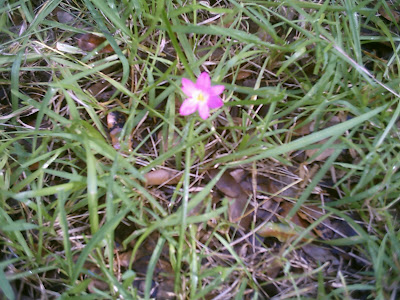Yesterday, we saw two monarch butterflies during the noon hour. Today, we found a great many monarch eggs on various milkweed plants. The grand total of spider lilies is now fourteen. The oxblood lilies keep appearing, now several bloom stalks to a bulb. All quarters of the pleasure grounds have now checked in: five different shows out front (one on each side of the front walk, and also in the upper strip, the lower strip, and all along the front fence. New bloom stalks continue to appear at the oak motte. Last, but not least, are the shorter-stemmed oxblood lilies in Mack's flower bed, the ones that came from a friend in Bastrop, mixed in with narcissi and old-fashioned irises. This has been a very good year for new generations of tree lizards and of anoles. For once, they're occupying the same places at the same time; usually, where there are lizards, the anoles lose out. The morning glories are loving this weather. All chile plants are covered with blossoms. The rains are bringing the lantanas into bloom at last, and we're seeing more hyacinth-bean blooms with the passing days. The hummingbirds continue to go first of all to the Turk's cap before any other flowers. Honeybees enjoy the garlic chives, and both kinds of doves prospect every day among the seedheads of the wild sunflowers. Some pecans are still in green hulls; others are ready to eat.

